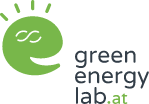The project COOL-KIT develops, demonstrates and structures system solutions for the cooling of buildings from the founders’ period (Gründerzeit). Buildings from this period (approx. 1850 to 1910) characterize the centers of many European cities and often serve high-profile functions. Climate change, densification and sealing are increasingly causing extreme summer situations in these central urban locations and are rapidly increasing the call for active building cooling.
The lack of overarching approaches to cool this important group of buildings, and the current proliferation of inefficient individual cooling systems (e.g. split units) is increasingly becoming an energy-related, acoustic and architectural burden. The developed system solutions are based on different active cooling techniques (activated intermediate ceilings, fan coils, radiators) and components, which are integrated into PV driven multifunctional units providing cooling energy. Passive approaches such as shading or night ventilation are considered as supplementary measures. The use of predictive control technology ensures optimal management. The cooling surfaces are used in winter for heating operation to reduce the needed flow temperatures of the heating system, relieving the load on the district heating. Selected system configurations will be implemented in several buildings of the two involved universities, followed by energy-related, economic and ecological evaluations
